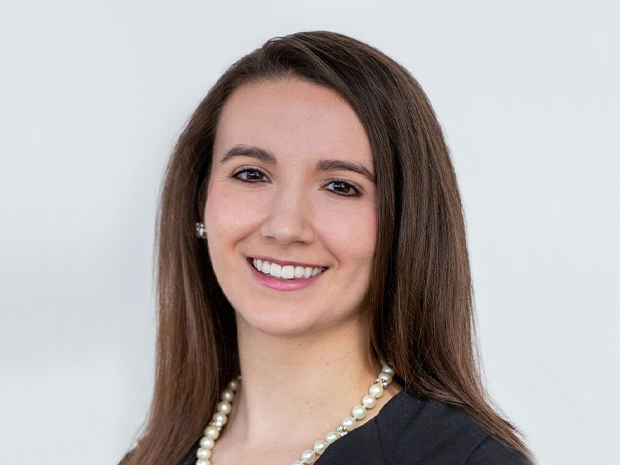SECURE 2.0 codified certain EPCRS correction methods for common plan failures.
Key takeaways
Before SECURE 2.0, the correction methods have historically been handled through EPCRS.
Codifying the correction methods encourages employers to correct errors when discovered.
The SECURE Act 2.0 (SECURE 2.0), enacted on Dec. 29, 2022, makes significant changes to retirement legislation, including expanding the ability of plan sponsors to "self-correct" certain failures that may arise in the day-to-day operation and administration of retirement plans. The IRS currently maintains a correction program, referred to as the Employee Plans Compliance Resolution System (EPCRS). EPCRS includes a Self-Correction Program (SCP) component through which plan sponsors can self-correct certain types of errors without the need to make a submission to the IRS or obtain IRS approval. Prior to SECURE 2.0, EPCRS had limits on the types of errors that could be self-corrected.
In addition to the IRS’s correction program, the U.S. Department of Labor (DOL) maintains its own Voluntary Fiduciary Correction Program (VFCP); as the name suggests this program allows plan fiduciaries to correct, with the DOL’s approval, certain fiduciary violations related to employee benefit plans. The IRS and DOL programs have different focuses, but in certain respects, there are overlapping elements.
SECURE 2.0 permits qualified plans, 403(b) plans, SEPs, SIMPLE IRAs, and IRAs to self-correct any “eligible inadvertent failure” to comply with the applicable Internal Revenue Code (Code) requirements.
“Eligible inadvertent failure” is any failure that occurs despite the existence of practices and procedures to maintain compliance with the applicable Code requirements. Failures that are egregious, relate to the misuse of plan assets, or constitute an abusive tax avoidance transaction are not eligible for self-correction. Self-correction is also not available if (1) the failure was identified by the IRS before any actions were taken to self-correct, and (2) the self-correction was not corrected within a “reasonable” time period after the failure was discovered.
The ability to self-correct was significantly expanded as follows:
- No specific deadline to self-correct eligible inadvertent failures if corrected within a reasonable time period and prior to IRS discovery. SECURE 2.0 specifically states that the correction period " is indefinite and has no last day." Thus, the eligibility to self-correct is determined by when the error is discovered and not when it occurred.
- Expanded the definition of failures eligible for self-correction, as “eligible inadvertent failures” is very broad and not limited to a specific type of error. For example, a plan document failure to timely adopt a compliance amendment is now eligible for self-correction.
- Expanded availability of self-correction when under IRS examination if the plan sponsor can demonstrate commitment to implement self-correction. Prior to SECURE 2.0, the self-correction of the significant failure was required to be “substantially completed” to avoid audit sanctions under the IRS’ Closing Agreement Program.
- Expansion of self-correction to include SEPs, SIMPLE IRAs, and IRAs, which were not previously available.
In addition to SECURE 2.0 expanding the scope in which plan failures can be self-corrected, it also provided specific relief for certain failures, such as errors in administering automatic contribution arrangements, making overpayments to participants, plan loan failures, and a retroactive amendment to increase employer contributions. Each of these corrections is discussed further below.
Safe harbor for errors in administering automatic contribution arrangements
In addition to expanding correction methods under EPCRS, SECURE 2.0 codified the safe harbor correction method available for automatic contribution arrangements with respect to employee elective deferral failures. For failures occurring after Dec. 31, 2023, new section 414(cc) provides that failures in implementing automatic contributions in a retirement plan or the failure to include an eligible employee in an automatic contribution arrangement will not disqualify the plan if appropriate self-correction actions are taken.
The safe harbor correction method related to automatic contribution arrangements was set to expire on Dec. 31, 2023, under EPCRS. The safe harbor provides relief for 401(k) and 403(b) plans with an automatic enrollment feature. SECURE 2.0 follows a similar correction structure as the one previously permitted under EPCRS.
Under SECURE 2.0 and EPCRS, if a plan sponsor identifies or is notified by an employee of a failure to implement a deferral election for an automatic contribution arrangement, it can correct the error by taking the following steps:
1. First, the plan sponsor must implement the deferral election, whether that is the election under the plan’s auto-enrollment provisions or an affirmative election made by the participant. The deferral must begin no later than 9½ months after the end of the plan year.
However, if an employee notifies the plan sponsor of the failure, then the plan sponsor has an alternate timeline by which it must take corrective action. In this situation, it must instead implement the deferral election by the employee’s first pay period occurring on or after the last day of the month following the month in which the employee notified the plan sponsor.
2. Second, after implementing the deferral, the plan sponsor must provide notice of the failure to the affected employee within 45 days after the date on which the correct deferral began. The notice must satisfy certain criteria to be valid.
3. Lastly, if the affected employee would have received matching contributions on the missed deferrals, then the plan sponsor must deposit the missed matching contributions, plus earnings, to the employees’ accounts.
A common error among plan sponsors is the failure to provide notice of the elective deferral failure to the affected employee within 45 days of the date on which the first correct deferral occurs. When a plan sponsor fails to provide this notice (or fails to follow either of the other two steps above), the plan sponsor is then ineligible to use this safe harbor correction method. Absent this safe harbor, the plan sponsor must correct the deferral failure by making a contribution to the affected employee in the amount of 50% of the missed deferrals, plus earnings, and the employee must be 100% vested in the contributions.
The significance of SECURE 2.0 codifying the safe harbor correction method is that it extends the timeframe for its applicability without an expiration date and, in turn, supports SECURE 2.0’s broader push to expand automatic enrollment to new 401(k) and 403(b) plans implemented after SECURE 2.0’s enactment with automatic enrollment mandatory for plan years beginning after Dec. 31, 2024.
Overpayments
Plan participants occasionally receive money from their retirement plan to which they are not entitled (i.e., an overpayment). This can occur both in defined contribution plans, like a 401(k), where a participant typically receives a one-time payment from the plan after the termination of employment, and in defined benefit plans, where payments are made over time, often monthly and after attaining retirement age. SECURE 2.0 added language to both ERISA (Employee Retirement Income Security Act) and the Internal Revenue Code (Code) addressing the correction of overpayments, which has historically been addressed in the EPCRS. These new provisions are effective as of the date of enactment, Dec. 29, 2022.
The additions to ERISA and the Code protect plan fiduciaries and the qualified status of the plan when inadvertent overpayments occur, and the plan sponsor handles the overpayment in accordance with the new provisions.
A decision of whether to collect an overpayment would factor in the amount involved, the impact of the overpayment on other participants, and the time required to handle recoupment.
In some cases, an employer taking into consideration the amount involved and other factors may decide to not pursue repayment of an inadvertent overpayment. In this situation, SECURE 2.0 specifically amended the Code to authorize such inadvertent payments as permissible rollover amounts. This change provides relief for participants and beneficiaries from the potential adverse excise tax consequences stemming from a rollover of an inadvertent overpayment.
When an overpayment is part of a non-decreasing annuity (i.e., set periodic payment), recoupment of the overpayment can be made by reducing future benefit payments, subject to the following conditions:
- The reduction must stop once the full amount of the overpayment is recovered.
- The annual recoupment cannot be more than 10% of the full amount of overpayment (e.g. if the overpayment was $1,000 only $100 can be recovered each year).
- The payments cannot be reduced below 90% of the periodic amount (e.g., if the payment is $500, it cannot be reduced below $450).
Action can be taken to collect the overpayment from the participant. Again, the new provisions set conditions in this circumstance.
- Interest or other amounts, such as collection costs, cannot be applied to the overpayment.
- Collection attempts cannot include threats of litigation unless there is a reasonable chance to successfully obtain an amount greater than the cost of recovery.
- A collection agency cannot be used to collect the overpayment unless the participant fails to return the funds after a court judgment or decree has been issued.
- For overpayments that were rolled over, the distribution, which is a return of the overpayment, from the qualified plan or IRA that initially received the overpayment will be treated as a rollover. Therefore, the participant will not be taxed on the distribution.
- If the collection is for overpayments of a non-decreasing annuity and in the form of installments, the sum of the annual installment payments for a calendar year cannot be more than 10% of normal periodic payments in a year.
Participants have the right to contest all or part of the requested recoupment.
The plan sponsor can choose not to collect the overpayment. One iteration of this scenario is that the plan is amended to increase past or decrease future payments to the affected participants. Also, if the distribution which included the overpayment was paid to a participant who subsequently passed away and the funds are in the hands of the participant’s beneficiary, the overpayment cannot be collected from the beneficiary. Additionally, if the overpayment occurred more than three years prior to the date the employee is notified of the error, collection cannot be pursued, unless the error made was due to fraud or misrepresentation on the part of the participant. If the overpayment is part of an otherwise eligible rollover distribution, it will be treated as eligible.
Historical guidance under EPCRS generally required a plan sponsor to make a deposit to the plan for any shortfall in return for an overpayment. The change to the rules made by SECURE 2.0 modified this and only requires the sponsor to make a deposit in some circumstances.
- A participant in an individual account plan (i.e., a 401(k) plan) is harmed. For example, Participant A’s account balance was distributed to Participant B. If Participant B did not return all the funds received in error, the sponsor would need to make up the shortfall so that Participant A could be made whole.
- Procedures governing plan distributions are not followed, resulting in a fiduciary breach.
- Defined benefit plans are subject to minimum funding requirements and an employer must continue to make contributions to meet those requirements. Higher than normal contributions may be required if the overpayments were significant enough and the plan is in danger of not paying appropriate benefits to other participants.
SECURE 2.0 noted that a reasonable interpretation of prior guidance can be relied upon for correction of inadvertent overpayments (i.e., reduction of future payments and overpayments returned through installment payments) implemented prior to enactment, Dec. 29. 2022.
If the plan seeks to recoup past overpayments of a benefit other than a non-decreasing annuity, the plan must satisfy the requirements to be developed by the DOL.
Plan loans
Self-correction for participant plan loan errors has been expanded under SECURE 2.0. The relief under EPCRS from reporting deemed distributions on Form 1099-R will also apply to self-corrected plan loan errors. SECURE 2.0 also directs the DOL to treat eligible self-corrected loan errors as meeting the requirements of the VFCP if certain criteria are met. There must be a similar loan error eligible for correction under EPCRS and the loan error is corrected in that manner. The DOL, however, may impose reporting or procedural requirements for plan sponsors who rely on the VFCP for the plan loan self-corrections.
Retroactive plan amendment to increase employer contributions
Employers who wish to increase employer contributions (except for matching contributions) for a plan year may do so by executing a plan amendment after the end of the plan year but no later than the employer’s tax return due date. This provision is effective for plan years beginning after December 31, 2023. The reasons for increasing employer contributions may include a desire to increase goodwill among employees or to increase a tax deduction. Other reasons may be a need to increase contributions to satisfy certain nondiscrimination testing requirements or to correct an operational issue.
For example, the plan may require the employer fund a 2% nonelective contribution for the year. However, there was a misunderstanding by the individual who calculated the contribution, and a 3% nonelective contribution was deposited to participant accounts before the end of the year. This is an operational error as the terms of the plan were not followed. The general correction method under EPCRS is to place participants in the position they would have been in had the error not occurred, which would result in funds being removed from participant accounts. To avoid that result, the employer could amend the plan to allow for a 3% contribution.
Summary
SECURE 2.0 directs the IRS to issue updated guidance for EPCRS (currently outlined under Revenue Procedure 2021-30). Until then, the exact application of its expanded provisions for self-correction will not be entirely clear. However, SECURE 2.0 also provides that corrections must be made in accordance with general principles that apply under the Code, regulations, and other guidance (including the current version of EPCRS). It is expected that the IRS will have some degree of discretion over the exact scope and details of the expanded self-correction features.
Congress, the Internal Revenue Service, and the Department of Labor continue to understand that inadvertent errors occur in the operation of a retirement plan and want to encourage employers to take the initiative to correct errors when they are discovered. This is the concept EPCRS and VFCP were built around. Continued improvements are welcomed by employers, plan practitioners, and benefit participants, as corrective action helps to preserve the tax-qualified status of the plan.
RSM contributors
-
 Nancy ManarySenior Director
Nancy ManarySenior Director -
 Christy FillingameSenior Manager
Christy FillingameSenior Manager -
 Lauren SanchezManager
Lauren SanchezManager

